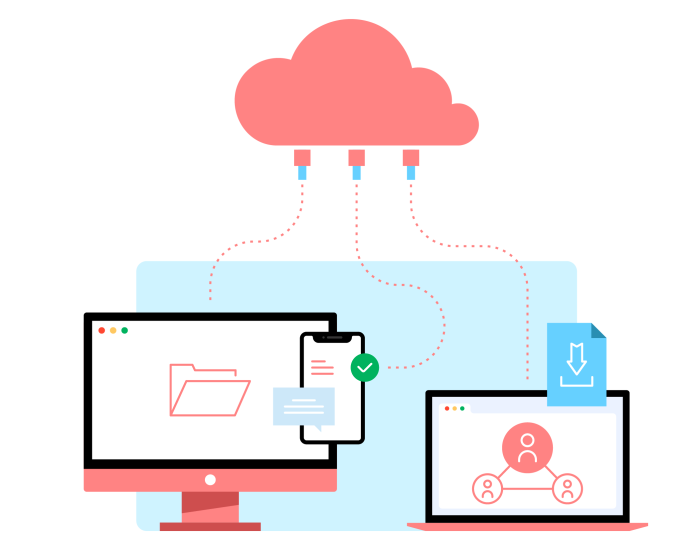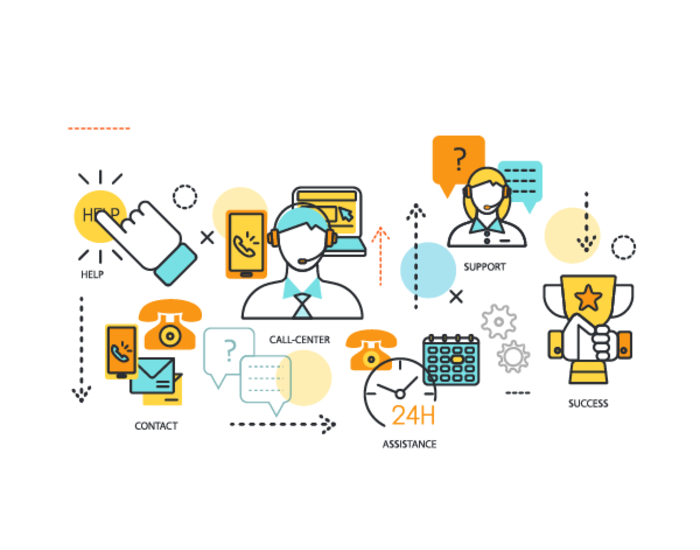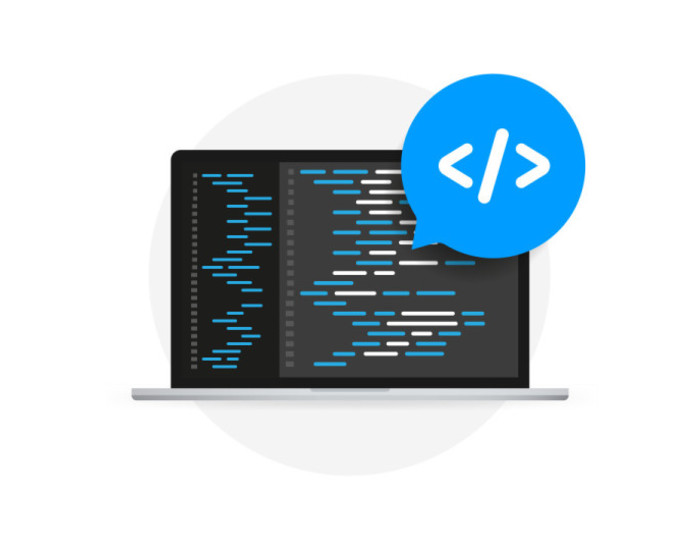The Benefits of Live Chat for SaaS Companies

If you sell SaaS software, you already know that building a fantastic product and getting traction with users is just the first step. Past that, your long-term success hinges on keeping and growing those customer relationships. And here, communication is key. When your customers encounter an issue, can’t solve a problem, or have suggestions for improvement, it’s vital that they have a simple, direct way to get in touch with you so that you can ensure their success.
Often, to get in touch with a company, customers have to choose between submitting a contact form or spending time on the phone waiting for an agent. Even those with dedicated account managers can usually only reach out through email and hope for a speedy response. But, SaaS live chat has changed the nature of these interactions — for software companies and their customers alike.
Live chat solutions let customers communicate directly with a representative of your company through text in an interface that’s familiar to anybody that’s used an instant messaging app. Now, whether customers have a dedicated rep or not, they have a direct, responsive way to connect with companies.
[Read More: How to build a Customer Support Widget]
And, it turns out, what’s valuable to customers is valuable to companies too. SaaS live chat systems give businesses the speed and availability to address customer needs the moment they arise.
For example, per a Zendesk survey, in 2019, 30% of businesses adopted live chat software to deliver faster time to issue resolution, while a similar number did so to ensure 24/7 availability. And, live chat is effective: nearly 85% of customers who resolved their issue via live chat were satisfied with their outcome.
The takeaway? SaaS vendors need to rapidly and effectively meet the needs of their customers— and they need to implement a live chat service to do so. But, not all custom built or SaaS live chat is created equal, which is why this guide is here to help.
In this guide we will step through the benefits of chat for SaaS companies, the kinds of live chat solutions available, and the technical considerations for implementing the best software solution into your service. By the end of this guide, you’ll be able to decide on the best live chat software for your business and take the first steps to bringing it to your product.

The role of live chat for SaaS companies
Broadly speaking, the goal of any live chat implementation is to make it as easy as possible for customers to reach out and speak directly to you. For SaaS companies interested in improving their customer experience, this direct line of communication helps to solve two major problems: customer support and customer acquisition.
We’ll explain how online chat provides a unique solution to accelerate and simplify both of these essential needs for your business.
Solve customer problems quickly through SaaS live chat
First, one of the more intuitive use cases for SaaS live chat solutions is to improve and accelerate customer support. Online chat is a powerful tool for support because it can be available to your customers wherever they are: as an on-website chat widget, such as in docs or on a pricing page, embedded directly in your product, or as a standalone helpdesk. In any of these forms, chat lends two key advantages to your support team: speed and context.
In terms of speed, live chat is faster than asynchronous support tools like email or contact forms. This lets customers reach out the moment they encounter an obstacle, meaning that your team can catch problems as they happen and resolve them before they become a major obstacle for your customers.
Additionally, context is key to solve the most complex issues that arise for SaaS users. Because you can embed chat anywhere in your app or website, you can give your customers a direct line of communication no matter where they are. In turn, this means they can easily reference the issue that’s blocking them, leading to more effective support conversations and a speedier time to resolution.
Best of all, live chat does all this while supporting the best practices for modern helpdesk workflows. Namely, rather than losing the information and issues shared in chat once a session closes, messages can be converted directly into tickets, which, in turn, can be easily escalated, followed-up on, and closed out when an issue is finally resolved. In other words, chat functions as an accessible and streamlined interface that allows your team to discover and track issues as they occur in real time, keeping tabs on them until they’re resolved.
For example, omnichannel-capable chat platforms, like PubNub, make it easy to build responsive, full-featured chat for support. Our flexible and powerful APIs let you build a powerful chat suite that can integrate chatbots directly, and that gives your agents full control over multiple support conversations. And, with our best-in-class integrations, you can quickly route in-app chats to additional channels, like SMS, send alerts based on incidents to your team, and build custom solutions to track chat issues in your own database of choice.
Drive acquisition and growth with customer engagement through live chat tools
As a channel for customer support, live chat tools support your customer experience and reduce churn by helping customers directly solve their issues when they arise. But, for every customer that reaches out directly to support, there are many more prospects and customers alike looking at your product, website, and docs, trying to find answers for themselves. What if you could reach these people at the height of their interest with the exact information that meets their needs?
Here, online live chat also supports your business by letting you proactively reach out to both prospects and customers at key points in their interaction with your product. By engaging with these visitors when they need it most, you can turn their interest into active, qualified opportunities for revenue.
As with live chat for support, chat for customer engagement and acquisition can take many forms. It can be embedded in your product, or can appear on your marketing site as a pop-up widget to accompany the browsing experience. Often, these chat windows are staffed by a simple chatbot that offers a positive impression of your brand, and can be set up to ask simple screening or qualifying questions before handing off conversations to a human. With this chat in place, you can prompt users and website visitors to chat based on intent signals they send through their activity.
For example, if an existing customer visits your pricing page multiple times, they may be considering an upgrade. If they visit tutorials, resources, and documentation around a specific topic, they may be confused and in need of guidance.
In both cases, proactively reaching out with live chat can let you leverage these signals to grow your relationship with that customer. These conversations can be used to surface resources, schedule demos for new features, or set up a call with their account rep. No matter the content of these chats, the key is that proactively using chat lets you zero-in on the signals your customers send through their behavior, and turn those moments into opportunities to engage.
Live chat can also be key to turning potential customers into new accounts. By embedding chat on your website, you can prompt new visitors to chat at key moments in the customer journey as they explore your offering. With the right screening questions, you can quickly route qualified leads to a scheduler in order to set up a call, and direct others to the resources that may help them in the current stage of their journey.

Additionally, chat that integrates with your tools makes it easy to bring these conversations into your sales funnel. Based on the content of chats, you can record new opportunities you might otherwise miss, mark highly interested prospects as qualified leads, and route all this information directly into your CRM. By using chat proactively and integrating it into your team’s tools, you can give your sales team everything they need to engage and grow that account.
As with support, PubNub’s flexible chat platform lets you easily build responsive chat for customer engagement. Our integrations with best-in-class AI providers like AWS, Google Cloud, Azure and OpenAI let you bring responsive and intelligent chatbots to chat with ease. With SDKs compatible with all major browsers and mobile devices, PubNub chat works anywhere your users may be.
Choosing and implementing a live-chat solution
When it comes to actually bringing chat into your SaaS offering, you have a lot of options—from pre-built chat that slots into your site, to tools and services that let you build custom chat that fits your exact needs. The route you choose will depend on how aim to use chat, and the degree to which you need to control and customize that chat for your service.
Approach 1: pre-built chat widgets for websites
The simplest solution for live chat software are self-contained chat services that offer a packaged chat widget to your end-users, and give your agents a separate portal to manage multiple conversations. These services often include tools to make basic conversational interfaces, or chatbots, which can answer basic customer questions and help route them to an expert as needed.
Often, these services can be embedded in your website using a simple line of Javascript, and feature their own web-based portal to customize chat, integrate it with other services, and connect it to your team.
One apparent advantage of these offerings is that they are easily configured with a minimum of programming work required, and often have many chat features built in. At a basic level, they often emulate the look and feel of popular consumer apps like Slack or Facebook Messenger. This means they can include features like instant messaging, message time stamps, typing indicators, and read receipts. In terms of customization, these services often let you tune general features like the font, logos, user avatars, and colors.
While pre-built chat is, by nature, easy to add to a website, this kind of chat also comes with severe limits for any use case that requires deeper integration with your SaaS offering.
In terms of customization, being able to reskin a pre-built solution may be enough for your needs. But, this surface-level customization is limited to what the chat provider allows, and precludes more thorough changes like the ability to add features, integrate with your proprietary systems, or dramatically change the presentation and fit of chat.
It’s also difficult to integrate pre-built chat directly into your service. This is because the low or no-code implementation that makes this chat easy to add to a website also means that it’s effectively a black box. Hosted chat services in this category are completely self-contained, meaning that your team has few, if any, ways to integrate them natively into your app on the code level.
When considering pre-built chat, there are clear tradeoffs. While it’s easy to add to a website, customize to fit your brand, and works out of the box, it can’t handle use cases that require deeper customization, or fuller, native integration into your service.
Approach 2: API-based chat platforms for deep integration into apps and services
If all you need is a chat widget to answer questions on a website, pre-built chat may be enough. But, if you are building a mobile app or any experience where chat is integrated directly, the benefits of a pre-built chat solution drop off sharply.
Let’s say, for example, that your service is a project-management app that syncs work across web, desktop, and mobile. If your users encounter issues in the course of their work, it’s important that they can reach your team as quickly as possible regardless of the device they’re using. For situations like this, you need a solution that lets you quickly and easily build chat that’s native to your service, and that you have full control over. This is where API-based chat platforms come in.
In contrast to pre-built chat solutions, API-based chat platforms, like PubNub, offer a combination of code-based tools and robust, cloud-based services, which combined give you the ability to implement full-featured chat into any application.
In terms of features, PubNub’s APIs include easy-to-use methods for all the chat features you need for engaging, real-time conversations: 1:1 and group chat, message reactions, read receipts, file upload, and more.
When it comes to customization, API-based chat platforms again offer a much greater range of control than pre-built chat. Compared to black-box solutions, APIs let you determine the look, feel, and functionality of chat for your service.
Best of all, API-based chat integrates closely with both your end-user experience and the backend logic for your app, meaning that chat arrives as a natural and seamless part of your customer experience.

The power of API-based communication platforms, like PubNub’s, comes from the way they expand upon a set of core technologies. At the heart is a chat service, which routes conversations and handles the basic sending and receiving of messages in real-time. This chat service also handles reliability, scale, and global availability. This means that chat stays up and running no matter how many users are active.
A chat platform will then build upon this core technology in two ways, to integrate more fully with your service. On the front end, it plugs into your app’s native UI, and can be integrated into external communication channels like Slack (for ease of access to your team) and SMS (to reach users directly through text messages). On the backend, it can connect to databases, route data directly through AI, and consult CRMs to efficiently capture leads and enable complex workflows.
Overall, when compared to pre-built chat solutions, an API-based platform offers a broader range of features, much deeper customization, and the ability to easily integrate advanced chat directly into your service without limits.
How to choose a chat platform
There are multiple options when it comes to choosing a chat platform. To get an in-depth understanding of chat platforms.
To summarize, however, you’ll want to select your chat platform based on how well it handles things like:
Developing for both the web and mobile apps: A chat platform should be OS-agnostic, and should offer robust and modern SDKs for both iOS and Android. It should also offer SDKs for React, React Native, and Flutter, to round out the needs of modern teams and hybrid development.
Chat features: the best chat is the one that customers actually use. This means that chat features, like typing indicators, read receipts, and message reactions are all small but crucial details that round out a modern chat experience, and meet user expectations for what chat should look and feel like. A fully-featured chat platform like PubNub will make it easy to build these functionalities into your app.
Design and customization: design isn’t merely how something looks, but also how it works. PubNub’s Chat UI Kits demonstrate best-practices for both aspects of great design, letting your team build best-in-class chat for your exact needs in less time.
Compliance and security: data and user privacy laws govern how services must handle and store data from users and their interactions. A chat platform like PubNub covers compliance for regulatory frameworks like HIPAA and GDPR, so you are supported no matter what region or use-case you’re addressing via chat.
Key Takeaways
In conclusion, live chat now plays a critical role for SaaS companies when it comes to improving the customer experience, reducing churn, converting new leads, and ensuring long-term customer retention. On one hand, live support chat lets SaaS providers immediately address and solve critical issues the moment they crop up. Taking a more proactive stance, chat is also a way for teams to leverage customer intent at key moments, and foster conversations that can lead directly to account expansions and new conversions.
While some companies will be able to implement simple, pre-built chat to meet their needs, those that require closer integration between their service and their chat provider will be better-served by an API-based chat platform, which lets them build chat directly into their service across a wide range of platforms.
If you’re a SaaS company looking to implement chat, get in touch with us. We would love to explore how PubNub’s chat platform can meet your needs today.